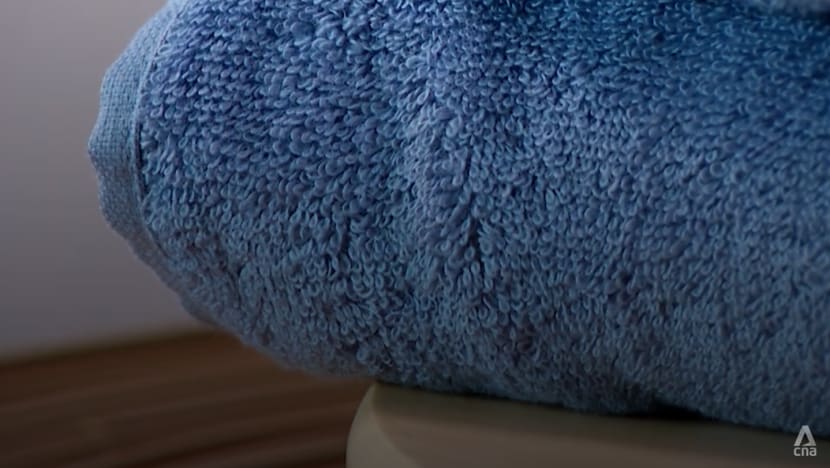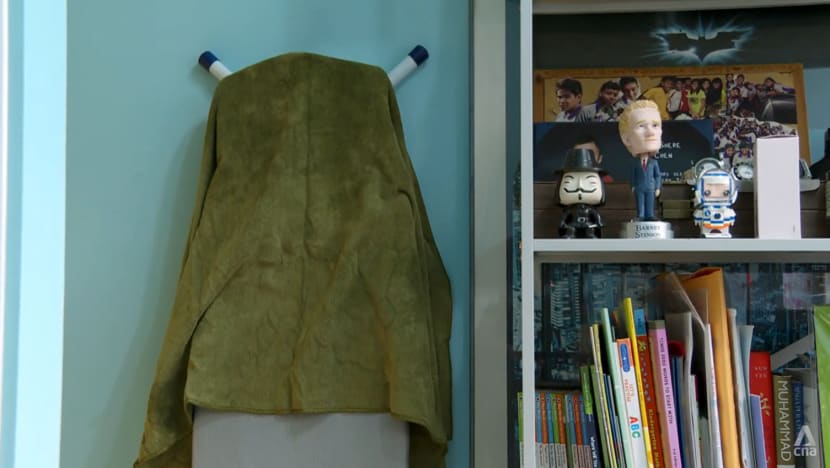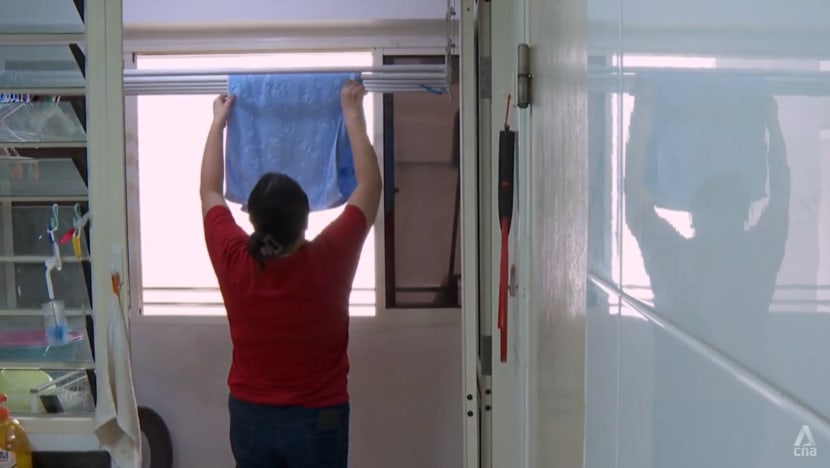Do you wash your bath towel often? Experts in Singapore found germs ‘too numerous to count’
An unwashed towel could be one bad day away from causing an infection. The programme Talking Point finds out how to keep the germs in check and which fabrics hygiene-conscious users should avoid.

Talking Point host Steven Chia found out from viewers that a quarter of them washed their bath towels fortnightly or even monthly.

This audio is generated by an AI tool.
SINGAPORE: As irony would have it, the towel used on seemingly clean skin after a shower could potentially be one of the filthiest things in your bathroom.
Justina Tan was appalled at what a lab test showed: Her bath towel, used once or twice daily, was teeming with bacteria “too numerous to count”.
She was one of eight participants whose towels were tested in a Republic Polytechnic lab, as part of a Talking Point experiment. Her towel, washed every three to four weeks, was ranked the second most bacteria-ridden towel in the group.
“I don’t think it’d be super clean, but I don’t expect it to be super dirty,” she said before the test results were announced.

Muhammad Sherefudin fared worst. He uses his towel twice a day but throws it in the wash only when it starts to smell. His sample turned out to be rife with bacteria, mould and yeast.
Like Tan, he never thought it would be “this bad”, and they are probably not alone in that.
A Talking Point poll of over 1,200 viewers found 11 per cent of them changed their towels once a month or longer, 14 per cent did so every two weeks, while half of them said they wash theirs weekly.
How often one’s towel is washed, however, is only part of the story. Some 43 per cent of respondents also said they leave their towels inside the bathroom, where there is high humidity and poor ventilation.
Elizabeth Purwadinata, for example, washes her towel weekly but leaves it to dry on a bathroom rack, which yielded the group’s third-highest bacterial count. Kai Leow, another weekly washer, was similarly dismayed that his towel was riddled with yeast microbes.

Forty-eight per cent of respondents, meanwhile, hung their towels elsewhere. Take Hillary Ho — she lets her towel dry in a room with the windows open, and it goes through the wash every three or four days. It was the cleanest of the lot.
But why do towels harbour so many microbes in the first place, when you have already scrubbed and rinsed yourself?
“We’re covered (with) bacteria naturally, and the typical shampoos or soap don’t remove all the bacteria,” says James Ho from the Singapore Centre for Environmental Life Sciences Engineering at the Nanyang Technological University.
“(Then) the bacteria stick to the towel, and they grow.”
What exactly could be festering in your bath linen, and how hazardous can a germ-laden towel be? Here is the experts’ advice on how to keep your towels clean for a clean bill of health.
WATCH: How often should you wash your bath towels? More often than you think! (22:36)
A RANGE OF INFECTIONS
Unwashed towels can harbour a host of bacteria, including pseudomonas, which is known to cause skin infections such as hot tub folliculitis and green nail syndrome, warns dermatologist Angeline Yong.
Pseudomonas can even enter the respiratory tract or the bloodstream and potentially result in more serious infections.
Individuals with compromised skin barriers — such as those with eczema or atopic dermatitis — are vulnerable owing to their skin’s reduced ability to act as a protective barrier.
“The skin barrier … is like a pavement,” says the dermatologic surgeon. “If there are multiple cracks because of dry skin … (you’re) much more likely to get an infection.”

Young children with sensitive skin, elderly people and those with weakened immune systems, including those with diabetes, may also face higher risks.
Poor towel hygiene may contribute to the spread of bacteria and infection. For example, using the same towel for one’s body and face can result in the transfer of Escherichia coli bacteria to the facial region, Yong says.
Damp towels left unwashed for too long may also develop mould, which can trigger allergic reactions when inhaled. Skin contact with mould may lead to irritation too.
Yeast, another potential concern, can cause infections such as candidiasis, commonly observed in infants with diaper rash and adults who are incontinent and wear adult diapers. In immunocompromised individuals, yeast can also affect the oral cavity, resulting in oral candidiasis.

WASH OFTEN MEANS TWICE WEEKLY
The more often a towel is used, the more bacteria and fungi it tends to accumulate — largely because frequent use prevents it from drying completely between uses, says Malini Thyagesan, who led the lab experiment at Republic Polytechnic.
What also matters is how often the towel gets washed, the senior lecturer and her team found. “A towel that’s well washed often, we’re talking about (once every) three to four days, … would have lesser amounts of microbes,” she says.
Temperature fluctuations can also fuel microbial growth. Mould tends to flourish between 16°C and 26°C, while yeast prefers slightly warmer conditions. So, toggling the air-conditioner on and off can create a favourable environment for both to thrive on towels.
Few people take advantage of one of the best natural disinfectants: sunlight. Only 8 per cent of respondents in Talking Point’s poll dried their towels outdoors.

The impact can be significant, as Ho demonstrated in an experiment with two used towels — one that was left to dry in the bathroom, the other in direct sunlight.
He found that the first towel had 600 bacterial colonies after 24 hours, while the sun-dried towel had half that number. So, the senior research fellow recommends drying towels in a well-ventilated area with exposure to sunlight.
The difference shows up even under the same roof. While Elizabeth’s towel had one of the highest bacterial counts, her son’s towel (used once a day and washed weekly) had one of the lowest counts — being dried after use in a well-ventilated utility room with some sunlight.
For homes without a balcony or much sunlight, Ho suggests drying towels under a ceiling fan. “Ventilation is the key,” he emphasises.

When it comes to towel material, there are several types, including cotton, microfibre, bamboo and antimicrobial options, which Malini’s team put to the test to see how each resisted microbial growth.
Cotton did worst, owing to its high absorbency and slow drying time. “If it doesn’t get dried well enough, then the bacteria are going to proliferate,” she says.
Microfibre performed slightly better but not as well as the bamboo towel, which had “just some fungus” and no detectable bacteria. The antimicrobial towel, with a coating that suppresses microbial activity, showed similarly good results.
No material, however, is foolproof. “Antimicrobial doesn’t mean that it totally eliminates (microbes),” Malini cautions. “The key … is (to wash our towels) often so that we start with a clean slate.”
Watch this episode of Talking Point here. The programme airs on Channel 5 every Thursday at 9.30pm.














